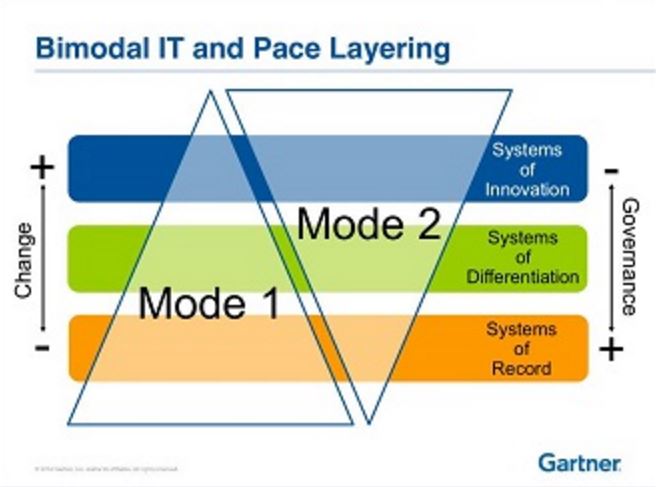
Are Bimodal CRM Strategies Finally Ending the Discussion on Centralized vs. Decentralized CRM Implementations?
One of the most important drivers for managing customer relationships and optimizing the customer’s experience has always been the retention of existing customers. Therefore, since the late nineties of the previous century organizations have tried to put the customer in the center of their operations and to actually place the customer in the driver’s seat when it comes to product development and service design. It was essential to obtain a complete overview of all interactions a customer has with the company, no matter with which department or through which channel. Accordingly, CRM systems had to be holistic and had to support both marketing, sales and customer service processes. And it goes without saying that these systems had to be implemented at a central level.
At the same time, however, departments were asked to be innovative and in many cases gathered more and more autonomous power in large enterprises. And the rapid rise of cloud computing in the last five to ten years contributed a lot to the ability of departments to actually execute their autonomy, and to obtain state-of-the-art and best-in-breed marketing, sales and service tools directly from the cloud, without even the need to involve the central IT organization. And although in some cases these developments have actually contributed to fast and creative transformation of customer related processes, in many enterprises the overall view on the behavior and demands of individual customers got lost completely. As a result in many large enterprises Customer Experience Managers, Customer Success Managers, or whatever great titles they might have, were added to the Board. Their main focus: transforming the fragmented customer experience into a smooth customer journey…. In some cases these C-level CRM-managers plea for the implementation of a centralized CRM system again, and declare war on local departmental initiatives. Mainly because many enterprises have been down that road before, in most cases these strategies are NOT successful. And let’s face it: is it fair to on one hand expect from departments to be innovative, but then when it comes to implementing CRM to operate at the pace of the slowest department?
A probably more contemporary way of dealing with the conflicting interests of departments and the central organization, is to develop a so called bimodal CRM strategy, wherein on one hand there is focus on the predictable and stable current processes and customer interactions by supporting them with stable technology and tools, while on the other hand there is also focus on the unpredictable and not yet defined effects of innovation and co-creation by supporting rapid application development for supporting tools. Whereby, for instance, a centralized database of all contacts will be realized, but whereby integration with best-of-breed and/or innovative tools will be supported as well. A strategy, whereby both the power of the central organization is used to enforce recording and maintaining customer data, and the independence of the departments to streamline their own processes are embraced.
Bimodal IT is a concept introduced by Gartner, and defined as the practice of managing two separate, coherent modes of IT delivery, one focused on stability and the other on agility. Mode 1 is traditional and sequential, emphasizing safety and accuracy. Mode 2 is exploratory and nonlinear, emphasizing agility and speed.
 Previous Post
Previous Post Next Post
Next Post